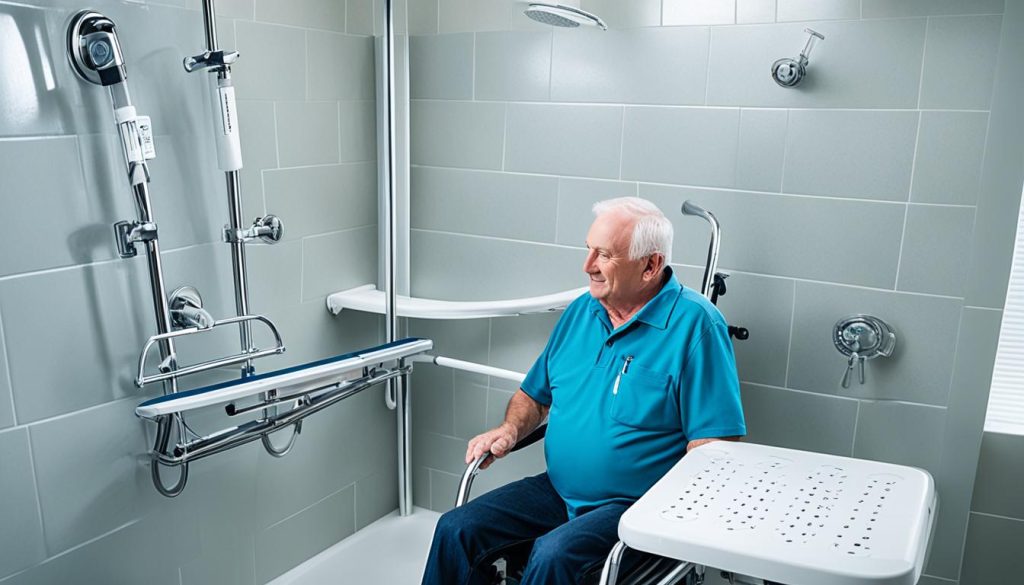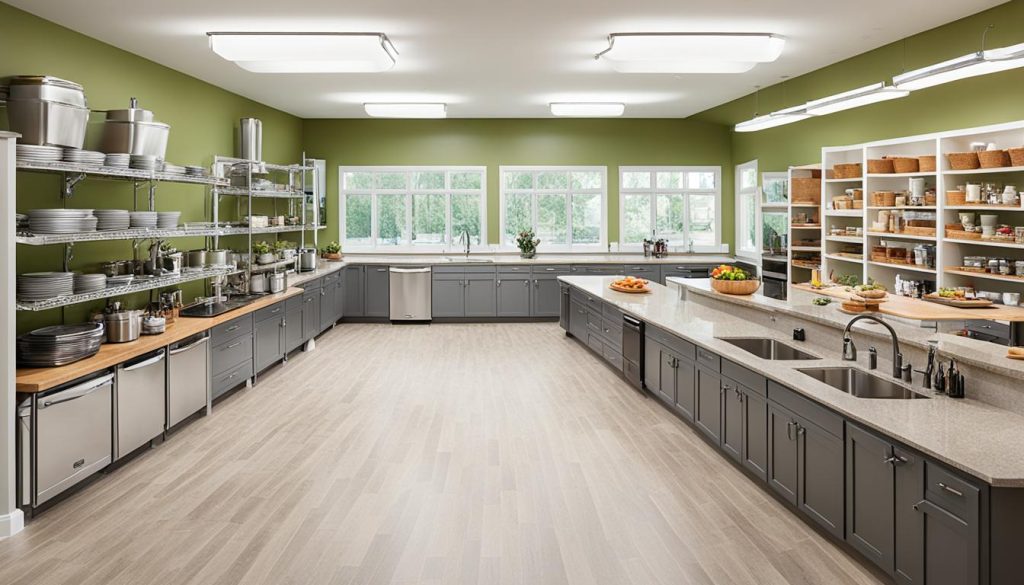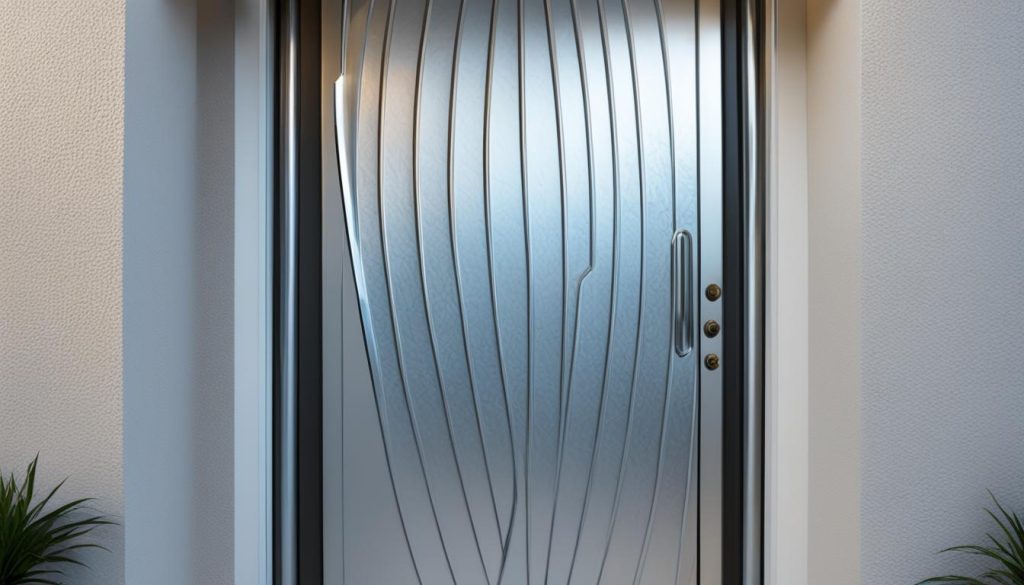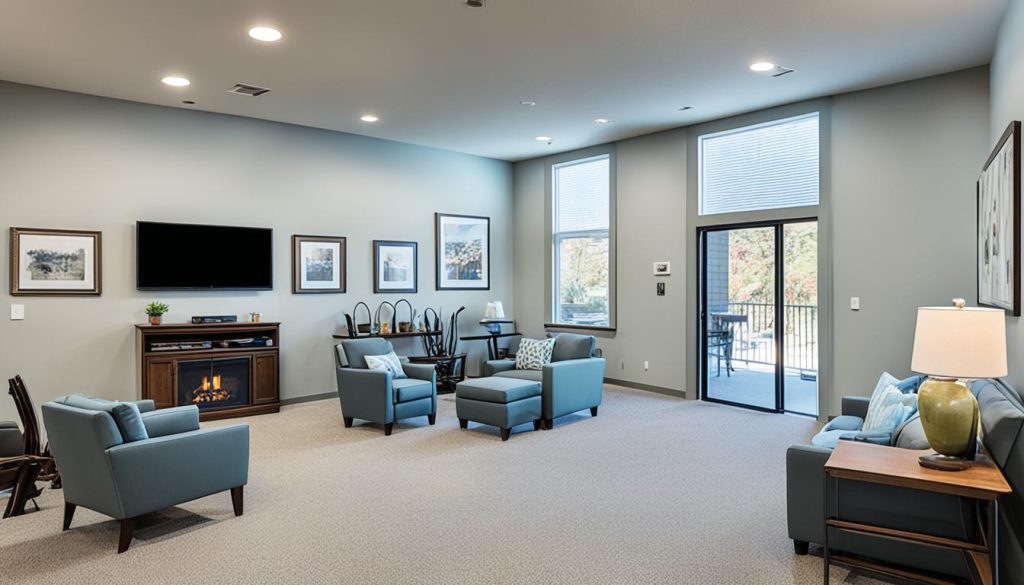As a man who spent a decade loving a woman with endometriosis and fibromyalgia, I understand the challenges and the importance of creating a supportive and adaptive home life. Watching my wife navigate the complexities of these chronic illnesses has shaped me into the person I am today. It sparked my passion for blogging, which has become a therapeutic outlet for me to share our journey, escape the “New Normal” of chronic illness, advocate for my partner, and secure our future financially. Through my experience, I have learned valuable tips and strategies for creating a supportive atmosphere, cultivating a home that adapts to our needs, and building a household that fosters an adaptive and inclusive environment. This article will provide home life tips, lifestyle adaptations and guidance on how to create a supportive and adaptive home life for both individuals and families facing chronic illnesses or disabilities.
Understanding Assistive Technology and Adaptive Equipment
Assistive technology plays a vital role in enhancing the quality of life for individuals with disabilities or injuries. It encompasses a wide range of tools and equipment designed to increase, maintain, or improve functional capabilities. From everyday assistive devices to home modifications, these resources enable individuals to participate fully in daily activities and live more independently.
When it comes to creating a supportive and adaptive home environment, it’s essential to grasp the differences between assistive technology, adaptive equipment, and assistive devices. Let’s explore each category in more detail:
Assistive Technology
Assistive technology refers to any device or tool that assists people with disabilities or injuries in performing tasks and activities. It can include anything from mobility aids and communication devices to sensory equipment and environmental control systems. The primary focus of assistive technology is to enhance life participation and promote independence.
Adaptive Equipment
Adaptive equipment specifically caters to the individual needs of people with disabilities. This type of equipment helps users compensate for their limitations and perform tasks they might otherwise find challenging. Examples of adaptive equipment include grab bars, wheelchair ramps, adjustable beds, and specialized kitchen utensils.
Assistive Devices
Assistive devices are designed to support individuals with specific impairments or functional limitations. These devices target specific areas of need such as hearing aids, braille readers, visual aids, and prosthetic limbs. Assistive devices are personalized to meet the unique requirements of each user, enabling them to overcome their limitations and function optimally.
Integrating assistive technology, adaptive equipment, and assistive devices can greatly enhance the accessibility and inclusiveness of a home. By understanding the unique benefits of each category, you can make informed decisions and select the most appropriate resources for your specific needs.
First source: [Reference to the first source]
Second source: [Reference to the second source]
Third source: [Reference to the third source]
| Categories | Examples |
|---|---|
| Assistive Technology | Mobility aids, communication devices, environmental control systems |
| Adaptive Equipment | Grab bars, wheelchair ramps, adjustable beds, specialized kitchen utensils |
| Assistive Devices | Hearing aids, braille readers, visual aids, prosthetic limbs |
Categories of Adaptations for Activities of Daily Living
Adaptive equipment is essential for individuals with disabilities to perform activities of daily living (ADLs) independently. ADLs encompass personal care tasks such as dressing, bathing, toileting, and eating. Various categories of adaptive equipment are available to facilitate these activities, promoting independence and improving quality of life.
Dressing Aids
Dressing aids are designed to assist individuals with limited dexterity or mobility in putting on and taking off clothing. They include dressing sticks, reachers, and buttonhooks, which enable easier handling of buttons, zippers, and fasteners. These tools empower individuals to maintain their personal style and choose their own clothing options.
Bathing Equipment
For individuals who face challenges in bathing, there are various assistive devices available. Tub chairs provide a stable seat in the shower or bathtub, ensuring safety and comfort while bathing. Transfer boards assist with moving in and out of the bathtub, while hand-held showerheads offer flexibility and ease during bathing routines.
Toileting Aids
Toileting aids are designed to enhance independence in toileting and maintaining personal hygiene. Examples include commodes, which can be placed by the bedside to eliminate the need for frequent trips to the bathroom, and leg straps that provide stability and support for individuals with limited leg strength or mobility.
Eating Aids
Adaptive eating utensils and dishes are valuable tools for individuals with limitations in hand function or fine motor skills. Adaptive utensils have larger handles, making them easier to grip and control. Scoop dishes feature high sides to help guide food onto utensils, minimizing spills and facilitating independent eating.
Mobility Devices
Mobility aids, such as walkers, wheelchairs, and canes, are crucial for individuals who have difficulty walking or maintaining balance. These devices provide support, stability, and increased freedom of movement, enabling individuals to navigate their homes and communities with confidence.
| Category | Examples |
|---|---|
| Dressing Aids | Dressing sticks, reachers, buttonhooks |
| Bathing Equipment | Tub chairs, transfer boards, hand-held showerheads |
| Toileting Aids | Commodes, leg straps |
| Eating Aids | Adaptive utensils, scoop dishes |
| Mobility Devices | Walkers, wheelchairs, canes |
These adaptive equipment categories cater to specific needs and help individuals accomplish daily tasks with greater ease. By incorporating these adaptations into their home environment, individuals can enhance their independence and maintain a higher quality of life.

Creating an Accessible and Safe Living Space
Modifying your living space to accommodate a neurologic condition or chronic illness requires careful consideration of accessibility and safety. By making necessary adaptations, you can create a home that is safe, comfortable, and supportive for your specific needs.
Here are some key modifications that can help in creating an accessible and safe living space:
- Remove tripping hazards: Identify and remove any obstacles or hazards that could increase the risk of falls or accidents. This may include removing doorway saddles, securing loose rugs, and organizing clutter to create clear pathways.
- Embrace smart home technology: Incorporate smart home tools that allow you to control various aspects of your living environment with ease. This can include controlling lighting, temperature, and appliances through voice commands or mobile apps, enhancing your accessibility and convenience.
- Make small adaptations: Simple changes within your home can have a significant impact on your daily life. Consider repositioning faucets to make them easier to reach, installing grab bars in the bathroom for extra support, and placing commonly used items at convenient heights.
When making modifications, it is essential to think ahead and anticipate potential future needs. By planning for the long term, you can ensure that your home remains accessible and supportive as your condition evolves.
Seeking the guidance of professionals, such as occupational therapists and physical therapists, can be invaluable. They can provide expert advice specific to your needs, guide you in selecting appropriate adaptive technology, and ensure that your modifications are safe and effective.
Remember, creating an accessible and safe living space is about enhancing your independence, comfort, and overall well-being. By taking the time to make these modifications, you can create an environment that truly supports your needs and promotes your quality of life.

Examples of Home Modifications
| Modification | Description |
|---|---|
| Accessibility Ramps | Installing ramps to improve access for individuals with mobility challenges. |
| Walk-in Showers | Replacing traditional bathtubs with walk-in showers equipped with grab bars for improved safety and accessibility. |
| Stair Lifts | Installing motorized chairs that glide along the staircase, providing a safe and convenient way to navigate multiple levels. |
| Smart Home Systems | Incorporating voice-controlled devices and automated systems to easily adjust lighting, temperature, and other home functions. |
| Lever Door Handles | Replacing traditional doorknobs with lever handles, which are easier to operate for individuals with limited hand dexterity. |
Downsizing and Seeking Supportive Communities
For individuals with disabilities or chronic illnesses, downsizing to a one-floor living space can greatly enhance accessibility and mobility. It reduces the physical strain of navigating stairs and minimizes fatigue. Additionally, seeking out communities with supportive amenities, such as doorman services and security staff, can provide peace of mind and assistance when needed. Choosing an accessible living option and location is essential for creating a supportive and adaptive home life.
The Benefits of Downsizing
Downsizing to a one-floor living space offers numerous benefits for individuals with disabilities or chronic illnesses:
- Increased Accessibility: Moving to a single-floor dwelling eliminates the challenges of navigating stairs, making it easier to move around and reducing the risk of falls.
- Reduced Fatigue: With everything on one level, daily activities become more manageable, minimizing physical exertion and conserving energy.
- Simplified Daily Living: A one-floor living space allows for a more streamlined and efficient daily routine, making tasks like cleaning, cooking, and personal care more accessible and convenient.
- Enhanced Safety: Fewer barriers and obstacles mean a lower risk of accidents and injuries, providing a safer living environment.
By downsizing to a one-floor living space, individuals can create a more accessible and manageable home environment that promotes independence and well-being.
Seeking Supportive Communities
In addition to downsizing, it’s important to consider the amenities and services offered by supportive communities:
- Doorman Services: Having a doorman can provide a sense of security and assistance with tasks such as carrying groceries or packages, ensuring residents feel supported.
- Security Staff: Communities with dedicated security staff offer an extra layer of safety and peace of mind, especially for individuals living with disabilities or chronic illnesses.
- Adaptive Living Options: Look for communities that offer adaptive living options, such as grab bars, wide doorways, and other accessibility features that cater to the specific needs of individuals with disabilities.
Choosing a supportive community with these amenities can provide an added level of comfort and support, making it easier to navigate daily life and ensuring a higher quality of life for individuals with disabilities or chronic illnesses.
| Benefits of Downsizing | Advantages of Supportive Communities |
|---|---|
| Increased accessibility | Doorman services |
| Reduced fatigue | Security staff |
| Simplified daily living | Adaptive living options |
| Enhanced safety |
Guiding Principles for Home Modifications
When it comes to modifying your home, there are several guiding principles you should keep in mind to ensure the changes are effective. By following these principles, you can create an environment that is safe, accessible, and pleasing for everyone, regardless of abilities.
1. Remove Doorway Saddles: Doorway saddles can create barriers for individuals with mobility challenges. By removing these saddles, you can improve accessibility and ensure smooth transitions between rooms.
2. Utilize Assistive Technology: Incorporating assistive technology into your home can greatly enhance functionality and independence. From voice-activated assistants to smart home tools, these innovations provide tools and resources to make daily tasks easier and more manageable.

3. Make Small Changes: Sometimes, it’s the small changes that can make a big difference. Simple modifications like adjusting the height of countertops or adding grab bars in the bathroom can greatly improve accessibility and safety.
4. Prioritize Functionality: When modifying your home, prioritize functionality above all else. Consider the unique needs of the individuals in your household and design spaces that cater to their specific requirements.
5. Ensure Accessibility: Accessibility should be at the forefront of your mind during the modification process. Create wide pathways, install ramps or stairlifts, and optimize the layout of your home to ensure individuals with disabilities or mobility limitations can move freely and independently.
6. Prioritize Safety: Safety is paramount when modifying your home. Assess potential hazards and take necessary steps to eliminate them. This may include installing handrails, improving lighting conditions, or removing tripping hazards.
7. Seek Professional Advice: Consulting with occupational therapists and physical therapists can provide valuable insights and recommendations as you modify your home. These professionals can assess your specific needs and suggest appropriate modifications and adaptive equipment.
By keeping these guiding principles in mind, you can create a home environment that promotes functionality, accessibility, and safety for everyone in your household.
Resources for Home Modifications and Adaptive Equipment
When it comes to finding home modifications and adaptive equipment, there are several resources available to assist individuals and families. These resources can provide guidance, connections, grants, and financial assistance to ensure that your home is supportive and inclusive. Here are some valuable resources to consider:
- AbleData: Visit AbleData.com, a website that offers a comprehensive database of accessibility equipment and resources. You can explore various options and find the right equipment to meet your specific needs.
- National Association of Agencies on Aging: The National Association of Agencies on Aging is dedicated to helping older adults and people with disabilities access the services they need. They can provide guidance and connections to services in your area, ensuring that you receive the support you require.
- Condition-Specific Organizations: Many condition-specific organizations, such as the National Multiple Sclerosis Society, offer grants and financial assistance for home modifications and adaptive equipment. These organizations understand the unique challenges associated with specific conditions and can provide targeted support.
- Tax Credits for Home Modifications: In some states, there are tax credits and deductions available for home modifications. These financial incentives can help offset the costs of making your home more accessible. Consulting with qualified tax professionals can provide further information on the specific credits and deductions available to you.
By utilizing these resources, you can gain access to the information and support necessary to create a supportive and adaptive home environment. Whether you need equipment, grants, or financial assistance, these resources can help you make the modifications you need to enhance accessibility and quality of life.

| Resource | Description |
|---|---|
| AbleData | A comprehensive database of accessibility equipment and resources |
| National Association of Agencies on Aging | Guidance and connections to services for older adults and people with disabilities |
| Condition-Specific Organizations | Grants and financial assistance for home modifications and adaptive equipment |
| Tax Credits for Home Modifications | Financial incentives available in some states for home modifications |
Importance of Planning and Anticipation
When it comes to creating a supportive and adaptive home life, planning and anticipating future needs are of utmost importance. Neurologic conditions and chronic illnesses can be unpredictable, and it is crucial to be prepared for potential changes in function and mobility. By proactively making modifications and embracing accessible design, you can ensure a smooth transition and enhance your quality of life.
Planning for change involves considering the future needs of all household members and making modifications accordingly. It’s essential to think beyond the present and anticipate how your home environment may need to evolve as circumstances change. By doing so, you can stay one step ahead and minimize any disruptions that may arise.
Proactive modifications encompass a range of changes that can be made in advance to support your current and future needs. This may involve incorporating features such as grab bars, ramps, and wider doorways to enhance accessibility. By implementing these modifications early on, you can create an environment that promotes comfort, inclusivity, and independence.
Accessible design is a key aspect of planning for change. It involves creating spaces and incorporating features that are usable and safe for individuals with disabilities or chronic illnesses. This includes considerations such as the layout of your home, the placement of furniture and appliances, and the use of assistive technology. By prioritizing accessible design, you can ensure that your home is welcoming and functional for everyone.
Remember, planning and anticipation are ongoing processes. Regularly reassessing your needs and making proactive modifications will help you adapt to any changes that may arise. By adopting a forward-thinking approach, you can create a supportive and adaptive home life that promotes well-being and enhances your daily experiences.
Image:
Learning from Others and Seeking Professional Guidance
When it comes to creating a supportive and adaptive home life, learning from the experiences of others can be tremendously valuable. Connecting with individuals who have already gone through the process of home modification can offer practical insights and tips that you may not have considered. By tapping into their knowledge, you can make more informed decisions and avoid common pitfalls.
Additionally, seeking guidance from professionals such as occupational therapists and physical therapists is essential. These experts specialize in evaluating and enhancing the safety and functionality of living spaces. They can conduct thorough safety evaluations and accessibility assessments to provide personalized recommendations tailored to your specific needs.
Occupational therapists and physical therapists have extensive experience in working with individuals with disabilities and chronic illnesses. Their expertise can help ensure that any home modifications and adaptive equipment implemented are not only effective but also safe for everyday use. Whether it’s evaluating the accessibility of doorways, recommending assistive devices, or suggesting modifications for specific rooms, these professionals can provide invaluable guidance.
Benefits of Learning from Others
When learning from others who have adapted their homes, you can:
- Gain unique insights and practical tips from firsthand experiences
- Discover innovative solutions and ideas that you may not have considered
- Avoid common pitfalls and challenges that others have encountered
- Feel supported and understood by connecting with individuals who have faced similar situations
Importance of Seeking Professional Guidance
When seeking guidance from professionals like occupational therapists and physical therapists, you can benefit from:
- Expertise in evaluating the safety and accessibility of living spaces
- Recommendations tailored to your specific needs and abilities
- Knowledge of the latest assistive devices and adaptive equipment available
- A comprehensive understanding of the impact that home modifications can have on daily living
By learning from others and seeking professional guidance, you can make informed decisions and ensure that your home modifications and adaptive equipment are both safe and effective in enhancing your daily life.
The Universal Benefits of Accessible Design
Accessible design is not only beneficial for individuals with disabilities or chronic illnesses but also for everyone in the community. Universal design principles aim to create environments that are accessible and pleasing for all individuals, regardless of abilities. Features such as curb cuts, accessible lighting, and ergonomic design benefit not only people with disabilities but also parents with strollers, older adults, and anyone looking for convenience and ease of use. By incorporating universal design principles, communities can enhance accessibility and create inclusive environments.
| Benefits of Accessible Design | Description |
|---|---|
| Accessibility for all | Universal design ensures that everyone, regardless of abilities, can access and navigate their surroundings comfortably and safely. |
| Community benefits | Accessible spaces foster a sense of community and inclusivity, allowing individuals from diverse backgrounds and needs to interact and participate fully. |
| Pleasing environments | Universal design principles create aesthetically pleasing spaces that are visually appealing and welcoming for everyone. |
| Curb cuts | Curb cuts are a prime example of universal design, making sidewalks and streets accessible for wheelchair users, parents with strollers, and individuals with mobility challenges. |
Resources for Home Modifications and Funding Assistance
When it comes to finding the right resources for home modifications and funding assistance, there are several options available to support you on your journey. These resources can help you access the necessary equipment and funds to create a supportive and adaptive home environment for yourself or your loved ones.
One valuable resource is AbleData.com, a national database that provides information on a wide range of accessibility equipment and resources. AbleData.com can help you find the tools and devices you need to enhance independence and improve the quality of life at home.
The National Association of Agencies on Aging is another valuable organization that offers guidance and connections to services for older adults and individuals with disabilities. They can provide you with information on available programs and resources in your area.
Condition-specific organizations, such as the National Multiple Sclerosis Society, can offer grants and financial assistance for home modifications. These organizations understand the unique needs and challenges faced by individuals with specific conditions and can help you navigate the funding process.
Centers for Independent Living, Vocational Rehabilitation Agencies, and Medicare and Medicaid Services are additional resources that can provide support and access to funding for home modifications. These organizations specialize in assisting individuals with disabilities and can help you find the long-term care services you need.
By consulting with these resources, you can gain valuable guidance and support in finding the right home modifications and accessing funding assistance. Remember, you don’t have to navigate this journey alone. There are resources available to help you create a supportive and adaptive home environment.
